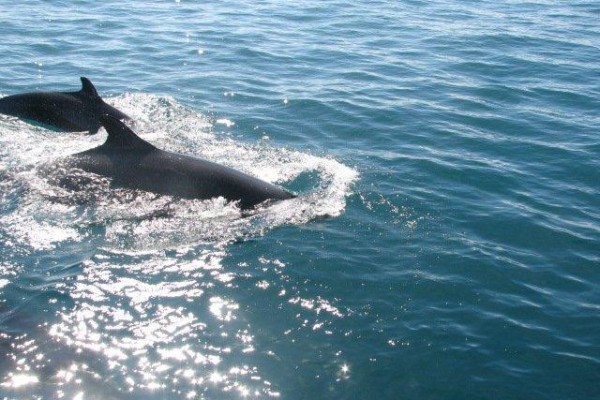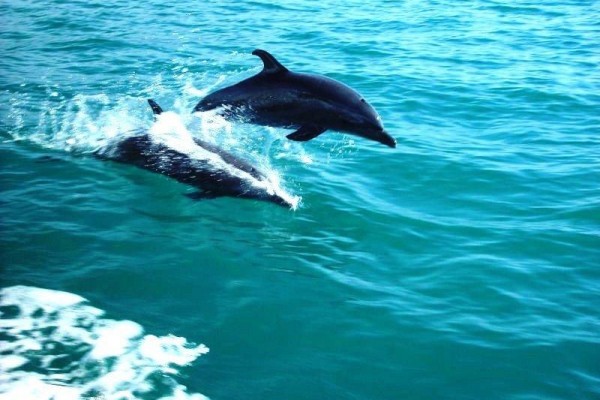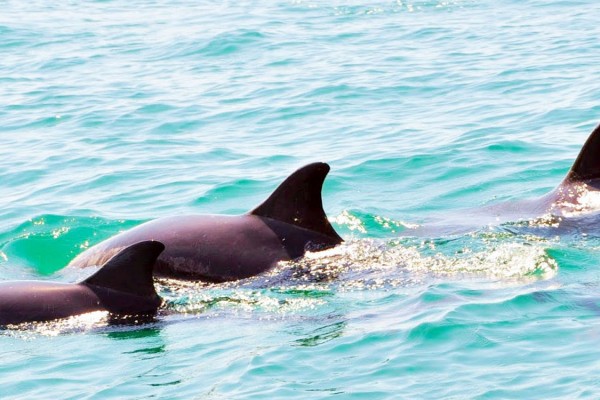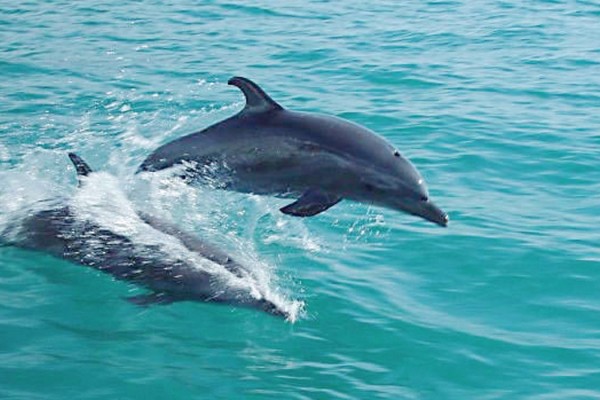Here, the crystalline Pacific is home to migrating humpback whales, as well as spotted, common, spinner and bottlenose dolphins.
The spinner dolphin (Stenella longirostris) lives in nearly all tropical and subtropical waters between 40°N and 40°S. The species primarily inhabits coastal waters, islands, or banks. However, in the eastern tropical Pacific, dolphins live far from shore. Spinner dolphins may use different habitats depending on the season.
The pantropical spotted dolphin (Stenella attenuata) is a species of dolphin found in all the world’s temperate and tropical oceans. The species was beginning to come under threat due to the killing of millions of individuals in tuna purse seines. In the 1980s, the rise of “dolphin-friendly” tuna capture methods saved millions of the species in the eastern Pacific Ocean and it is now one of the most abundant dolphin species in the world.
The common dolphin is the name given to two species (and possibly a third) of dolphin making up the genus Delphinus.
Common dolphins live in both warm-temperate and tropical waters ranging from 40–60°N to 50°S. Long-beaked common dolphins mostly inhabit shallow, warm coastal water. Short-beaked common dolphins are common “along shelf edges and in areas with sharp bottom relief such as seamounts and escarpments.
Common dolphin have a varied diet consisting of many species of fish and squid.
Bottlenose dolphins, the genus Tursiops, are the most common and well-known members of the family Delphinidae, the family of oceanic dolphin.
Bottlenose dolphins have the second largest brain to body mass ratio of any mammal on Earth (humans have the largest), sharing close ratios with those of humans and other great apes, which more than likely attributes to their incredibly high intelligence and emotional intelligence.







